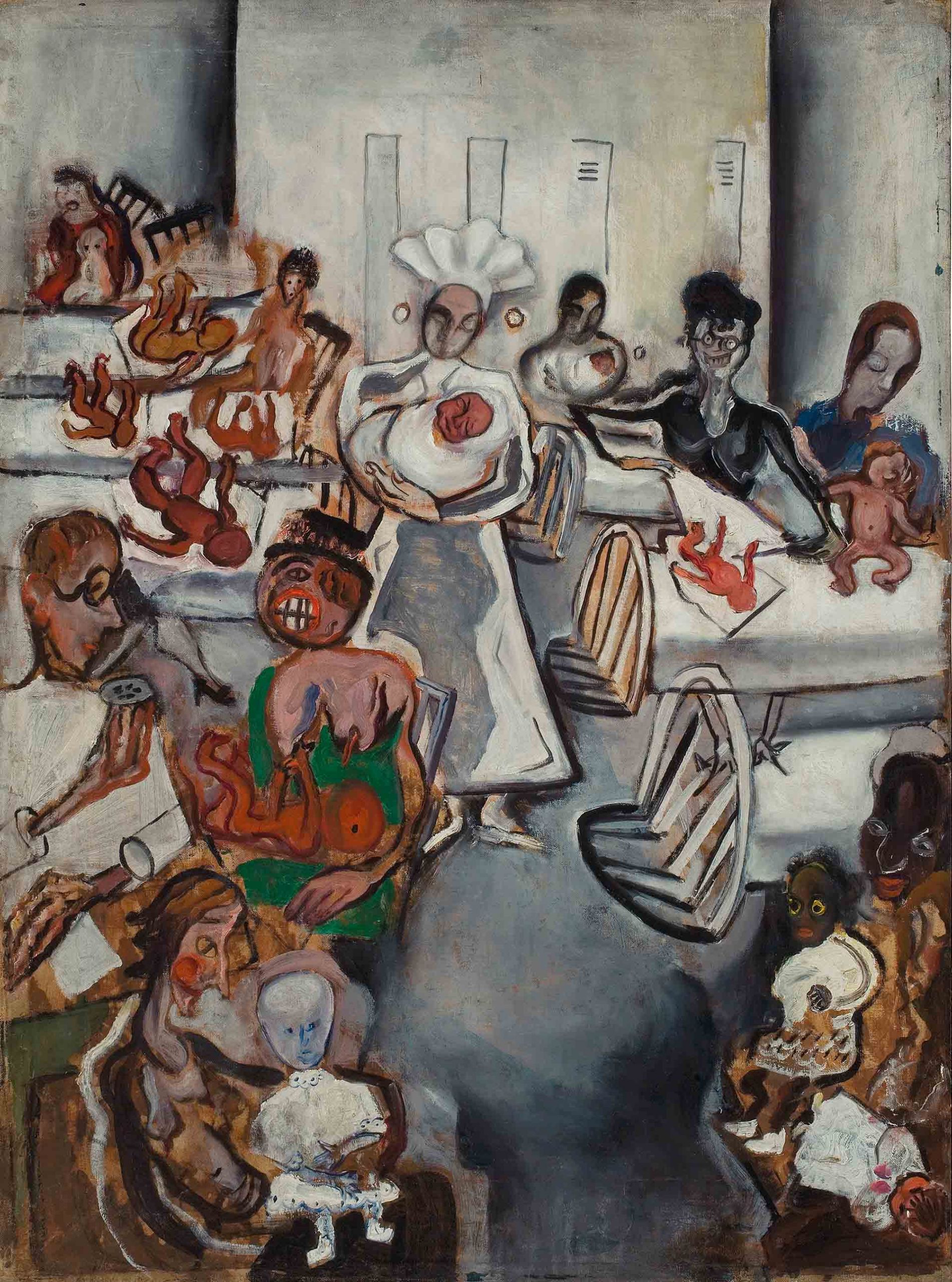The Human Comedy
“I painted the neurotic, the mad and the miserable. Also I painted the others, including some ‘Squares.’
Like Chichikov I am a collector of souls”
Alice Neel: The Hasty Papers: A One-Shot Review, 1960
Neel frequently evoked Honoré de Balzac’s The Human Comedy, a benchmark work for the leading Marxists which inquires into the causes and effects of human action in 19th century French society. Based on her personal ideas, and with a vantage point firmly rooted in 20th-century New York, Alice Neel used her art to document scenes of loss and suffering, as well as strength and endurance, and she did so with an implacable frankness and pronounced empathy.
Her attention to the figures’ physical and psychological vulnerability, accentuated by an often restricted palette, imbues the paintings in this section with unmistakable emotion. Abuse at home, the horrible sanitary conditions of disadvantaged people, and the horror of personal loss, among other misfortunes afflicting human beings, are reflected in Neel’s paintings with troubling compassion.

